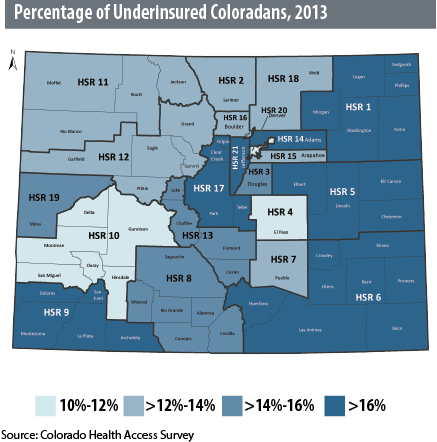Underinsurance occurs when health insurance doesn’t cover the full cost of care, leaving people with large and often unaffordable out-of-pocket costs.
The Colorado Health Institute defines underinsurance as spending at least 10 percent of income on out-of-pocket health costs for someone who earns at least $23,340 – 200 percent of the federal poverty line. For families below 200 percent of the FPL, underinsurance is defined as spending at least five percent of annual income on out-of-pocket medical expenses.
People who are underinsured may have plans with a high deductible, a common characteristic of bronze plans. These plans look attractive because of the relatively low premium, but they can be deceiving to someone who is new to buying health insurance. An unsuspecting consumer could be faced with high medical bills.
The percentage of underinsured Coloradans has held fairly steady from 2009 to 2013, but some regions have a greater portion of their population underinsured than others. In 2013, the mountain counties of Health Statistics Region 10 had the lowest prevalence of underinsurance, 10.7 percent. The northeast corner of Colorado had the highest percentage of underinsured residents, 22.7 percent.
People with high deductible health plans might forgo preventive care because of cost, potentially leading to untreated illnesses. And data from the Colorado Health Access Survey suggest there might be a slight correlation between regions with a high percentage of underinsured people and a high percentage of residents visiting the emergency department.
The Colorado Health Institute will continue to monitor this pattern and see if a strong correlation emerges in the coming years.

